What types of light bulbs exist: an overview of the main types of lamps + rules for choosing the best one
There are various types of lamps for arranging lighting.In addition to traditional incandescent devices, other types of light bulbs have become widespread, for example, LED, fluorescent, and halogen.
In this article we will look at the most popular light sources among users, noting the features of their design, advantages and disadvantages.
The content of the article:
Traditional incandescent lamps (LON)
A device of this type consists of a base where the contacts are located, a fuse, an incandescent element and a glass cylinder.
The spiral is usually made of an alloy with tungsten, which can withstand a high combustion temperature of +3200 °C for a long time. To extend the burnout time, the cylinder is filled with argon or other inert gas; in some devices, on the contrary, they create a vacuum.
To operate the lamp, electric current is passed through a conductor that has a small cross-section and a low degree of conductivity. The energy heats up the spiral, which emits light waves.
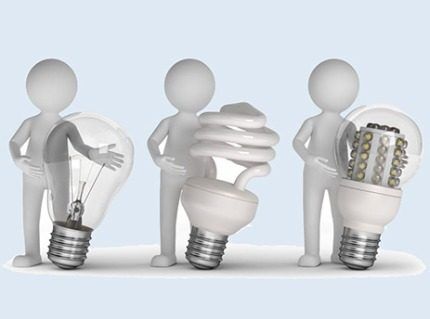
There is a huge variety of general purpose light bulbs, or LON for short: regular size or miniature for local lighting.
According to the type of design, the flask can be:
- painted;
- frosted glass;
- mirror
Modifications of LON can have flasks not only with colorless glass, but also with multi-colored transparent glass. As a rule, they are used for decorative purposes.
Models with frosted glass cylinders are in demand, providing soft, uniform light, which is especially suitable for lighting bedrooms and children's rooms.
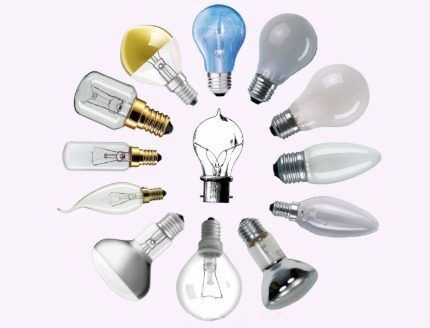
For mirror devices, part of the cylinder is coated with a special compound that reflects light, directing it in a narrow stream.
Such devices are often inserted into ceiling lamps, since they allow light to be cast only downward, without illuminating or heating the upper surface.
Bulbs operating on voltages of 12, 24, 36 V require minimal electricity consumption, but produce a very dim, weak light. They are used in flashlights or for emergency lighting.
Technical characteristics of LON:
- luminous efficiency - 9-19 Lm/W;
- power - 25-150 Watt;
- the average operating period is one thousand hours at a voltage of 220 V;
- Efficiency – less than 30%.
The advantages include low price, simple and accessible installation for everyone, pleasant yellowish lighting light.
Incandescent appliances have significantly more disadvantages: they are fragile, quickly burn out during voltage surges, and in addition, their surface becomes very hot, which can cause a fire.
There is an article on our website in which we described in detail the types of incandescent lamps, their labeling, and also outlined the main criteria for their selection. More details - go to link.
Variety of halogen light sources
This type of device with a base has a design similar to incandescent lamps, but instead of an inert gas, the bulb is filled with compounds of iodine, bromine or other halogens. This allows you to reduce evaporation of the heating element, as well as increase its temperature.

In addition to base lamps, other options have become widespread, for example, linear halogen lamps, which have the shape of a tube. Impact-resistant models with intense light are used for street floodlights.
Capsule low-voltage devices with miniature dimensions are popular. They are often used for chandeliers or suspended ceilings, but connection to the network must be done through a special transformer.
Another type is reflective devices, the design of which uses a special reflector - most often an aluminum disk. It allows you to adjust the angle of incidence of the light beam, directing it to the desired area of the room.
Such devices are used to install ceiling lamps, since they eliminate heating of the upper surface.
Technical characteristics of halogen lamps:
- power - 1-20 W;
- color rendering index - 100%;
- flask heating – 500 °C;
- light output - 15-22 Lm/W;
- operates in the range from -60 to +100 °C;
- service life - 2000-4000, when using a transformer up to 8000 hours;
- Efficiency – 50-80%.
Among the advantages of this category of devices are a fairly long service life, as well as the ability to manufacture miniature models that produce bright light.
They have excellent color rendering, and modern technology can give the radiance emitted both a warm and cool shade.
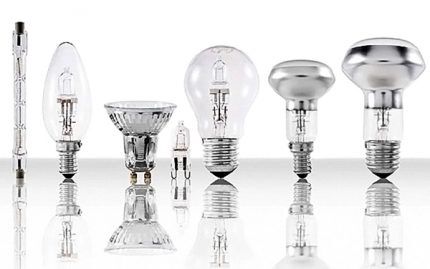
The disadvantages include strong heating of the surface of the flask, which is why it is made of heat-resistant quartz glass. But even in this case, it is not recommended to allow them to come into contact with the ceiling or walls of the lamp.
Halogen lamps are very sensitive to dirt - touching them with bare hands can cause the bulb to burn out or even disintegrate. They also do not tolerate power surges well.
Read about how to choose a good halogen lamp in this material.
Fluorescent lamps (CFL and LL)
The devices consist of a bulb, the inner surface of which is coated with a phosphor. The container containing the electrodes is filled with a mixture of mercury vapor and inert gas.
For starting, a special unit is used - electronic or mechanical ballast. When turned on, a charge is sent inside the flask, which causes the formation of ultraviolet waves, under the influence of which the phosphor begins to glow evenly.
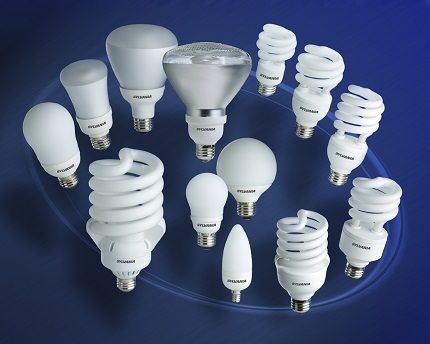
Models are divided into two types:
- linear devices (LL) - bulky tubes with two pins at the ends;
- compact lamps (CFLs), which have the appearance of a twisted spiral, in which the starting unit is hidden in the base.
The marking G indicates devices with a pin design, and the letter E indicates a threaded cartridge.
Technical characteristics of CFL:
- light output - 40-80 Lm/W;
- power - 15-80 Watt;
- service period - 10,000-40,000 hours.
An important advantage of fluorescents is their low operating temperature. Even when the product is turned on, you can safely touch it with your bare hand, making it safe to install on any surface.
At the same time, such devices have many negative sides. First of all, they are not environmentally friendly enough - the mercury vapor inside is poisonous.
Although they are not harmful to humans in a closed bulb, broken or burnt out bulbs can pose a danger. Because of this, they require a recycling procedure: used products must be taken to recycling points, which are not always easy to find.
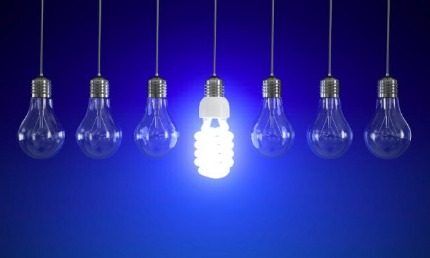
Other disadvantages include:
- Unstable operation at low temperatures. At -10 °C, even powerful devices shine extremely dimly.
- When turned on, the lamps do not light up immediately, but after a few seconds or minutes.
- Their cost is quite high.
- Operation may be accompanied by a low-frequency hum.
- Such models are difficult to compatible with dimmers, which makes it difficult to adjust the light intensity. It is also undesirable to use them together with switches that have backlight indicators.
- Although the service life is quite long, it is significantly shortened if it is turned on and off frequently.
In addition, the light emitted by these devices pulsates strongly, which tires the eyes.
You can read more about the design of fluorescent lamps, their advantages and disadvantages Here.
Light Emitting Diodes (LED)
The design of diode light bulbs is based on semiconductor crystals, which, as a result of a p-n junction, emit light rays.
As a rule, they involve at least five diodes, which are connected to the installation board. Operation occurs using a driver that converts alternating current into direct current.
The lamps practically do not heat up during operation, since they have special parts - radiators - to remove heat. Depending on the modification, the devices are equipped with screw or pin plinths.

Types of LEDs include filament devices. Outwardly, they resemble ordinary incandescent lamps, but instead of a spiral, they are equipped with semiconductor elements strung on a rod, which is placed in a flask with an inert gas.
In order for such a device to be screwed into the cartridge, it is supplemented with a traditional threaded base. Such models allow you to combine retro design with higher technical characteristics, such as energy efficiency, durability, and environmental friendliness.
Autonomous LED lamps powered by solar panels are also gaining popularity. They recharge during daylight hours and automatically turn on when darkness falls. Such models can operate in a wide temperature range from -30 to +50 °C.
Technical characteristics of LED lamps:
- power - 3-30 W;
- service life - 30,000-50,000 hours;
- light output - 100-120 Lm/W;
- light flux - 250-2500 lm.
LEDs can dramatically reduce lighting costs by up to 85%; their operation does not generate thermal, ultraviolet and infrared radiation.
Since no harmful substances are used in their production, they are considered environmentally friendly and do not require special disposal.
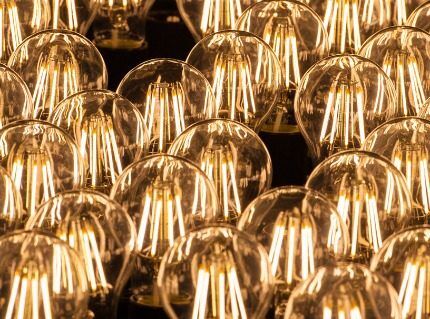
Unlike fluorescent lamps, these devices light up instantly, in addition, most models are dimmable, which allows you to set the desired level of light intensity.
Among the disadvantages, we can note the extremely high price; in addition, conventional lamps have a directional flow of light; Filament devices do not have this disadvantage. To illuminate a room, several sources are usually required at once.
We also recommend reading the article in which we described in detail the main characteristics of LED lamps - color temperature and power. Read more - read Further.
Rules for choosing the best lighting lamp
When choosing models for organizing lighting in residential premises, you should take into account not only the type to which the light bulb belongs, but also a number of other factors, namely:
- base device;
- power;
- color rendering index;
- light output;
- luminous flux stability coefficient;
- terms of Use.
Devices designed to be connected to a socket have a common part - a base, which is used for fastening with wires.In order for the lamp to be installed in the socket, it is important to pay attention to the marking of this element.
Among the threaded connections, the most popular are three types: “minion” E14, medium-sized E27 and large E40. The second option is most widespread, while the latter is usually used for street lighting.

Miniature fluorescent and halogen lamps often have G bases, which are attached to sockets using 2-4 pins. There are many options for such devices of different sizes, of which the most popular are: G4 modifications, G9, G23, 2G10, 2G11.
An important criterion is the lamp power; this indicator is indicated on the cylinder or base. If we take devices of the same type, then the light intensity depends on this value.
However, this rule does not work if you take devices of different types: the brightness of a 5-6 W LED is almost equal to the glow of a 60-watt incandescent lamp.
Luminous output indicates the number of lumens of light produced by a 1-watt lamp.
This factor is closely related to the energy efficiency of the device: a fluorescent device produces 600 lumens at a power of 10-11 W, while an incandescent device will require approximately 60 W for a similar flow of light.
The design of the luminaire and lamp also has an impact. Often, models of modern chandeliers or sconces are specially made for a certain type of appliance, for example, halogen. In this case, the manufacturer usually indicates in the instructions the characteristics of the required lamps.
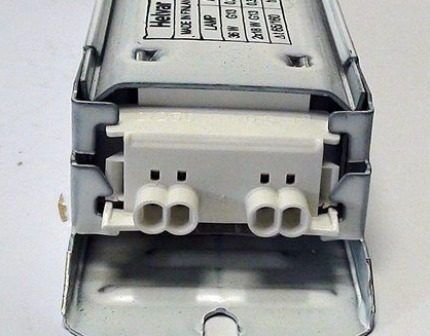
Certain types of devices also demonstrate increased sensitivity to voltage changes, which must be taken into account when living in regions where there are problems with electrical networks.
There is also a difference caused by color temperature.
There are several different standards for the most common labeling:
- 2700K indicates a warm tint similar to incandescent bulbs;
- 4000 K – daylight neutral tone;
- 6500 K – cold option.
Color rendering index Ra displays the correct perception of the color of the environment when illuminated by this type of lamp. As a rule, this indicator is indicated on the packaging, for example, 80 Ra at LEDs.
Light flux stability coefficient. This factor manifests itself throughout the entire period of operation of the device, during which the brightness should decrease by no more than 30% of the nominal value.
This indicator is of particular relevance for LEDs, which do not burn out, but gradually lose lighting intensity.
So, if at the beginning such a device emits light of 1000 lumens, then at the end of its service life this figure should be at least 70% of the original, that is, 700 Lm.
The optimal choice for different rooms
Experts involved in interior design advise using compact LEDs or low-voltage miniature halogens for suspended or suspended ceilings.
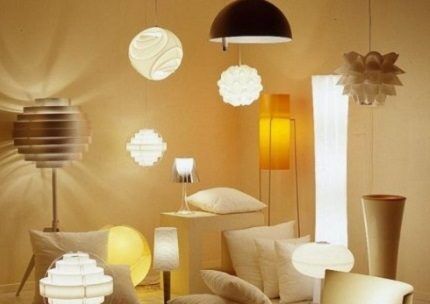
Almost all types of lighting fixtures can be used in chandeliers and other hanging structures. If the lamps are made of fusible materials, it is better to use LED or fluorescent sources.
The best options for sconces are small halogens, fluorescent models or traditional incandescent lamps. Often in such devices decorative modifications are used with flasks in the form of drops, flames, and balls.
For lighting, small LED bulbs or compact halogen bulbs powered by a transformer are suitable.
Living rooms usually use a combination of several lighting fixtures. A ceiling or hanging chandelier is complemented by a sconce, a floor lamp, a decorative table lamp, as well as built-in lamps.
It is advisable to equip the main device dimmer, which will dampen its intensity.
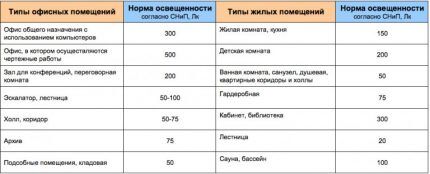
Floodlights for outdoor lighting predominantly use linear halogen devices. Lighting decoration of a yard or area is also possible using LEDs, including those powered by solar panels, or powerful incandescent lamps.
In the basement and cellar, where there is usually a high level of humidity, it is necessary to use lamps with waterproofing and a completely closed socket.
To prevent short circuits, it is advisable to use a step-down transformer. In this case, one or two 12-volt LED sources are best suited as a lighting device.
Similar requirements apply to lighting devices in bathrooms. Typically, halogen/LED models as well as incandescent lamps are used to illuminate the space.
To equip a schoolchild's workplace, a flexible table lamp is usually used, which allows you to change the direction of the light beam. Typically, a traditional 60-volt incandescent device with a clear or frosted bulb is inserted into it.
If there is a lack of light, it is advisable to also add lighting with built-in halogen lamps.
The choice of light source for greenhouses requires special attention. As research by scientists has shown, the red and blue regions of the spectrum are especially useful for plants. The first has a powerful effect during the flowering and fruiting period of vegetables, the second contributes to their active growth and development.
The easiest way to reproduce this light range is with the help of special LED lamps. You can make them yourself or buy them in a store.

When choosing a model, you should pay attention to the shade of the emitted rays. Typically, this factor depends on user preferences.
Nevertheless, designers recommend choosing “cozy” warm light for the living room or bedroom, while coolish light for the office or office space.
When determining the power of a lamp, you need to take into account not only the area of the room for which it is intended, but also the degree of natural lighting level: in darkened spaces with windows to the north, more powerful devices are installed.
Influences the choice and color scheme of the interior: rooms with dark walls require more powerful lamps.
Conclusions and useful video on the topic
The presented video describes in detail the main characteristics of various types of light sources:
Continuation of the story, where we talk about the options for lamp bases and the features of their use:
Despite the fact that light bulbs are basic devices, their role in creating a comfortable and cozy living environment is difficult to overestimate. A properly selected device will create comfortable lighting, which is an integral part of comfort in the home.
The lamp will serve reliably for a long time, perfectly complementing a chandelier or other lamp. In addition, an energy-saving device will reduce the amount of utility bills due to energy savings.
Still have questions about the topic of the article? Or can you supplement the material with interesting information about lighting sources? Please leave your comments, share your experience, and ask questions in the block below.




Science does not stand still, and a huge variety of types of lamps with their advantages, disadvantages, and features allows you to choose the best option in terms of economy, efficiency, and design. I prefer LED and fluorescent lamps. I remember with horror how incandescent lamps shattered into pieces when turned on. I assume that this arose from exceeding the permissible voltage and the structural features of the incandescent lamp. The chandelier had to be chosen not by its beauty, but primarily by the direction of the shades. So that they are “unfolded” at the top to avoid injury.
LED lamps are simply a super invention, but for some reason it took them a long time to reach our market. Although the technology is not new at all. It is high time to abandon incandescent lamps, just as historically obsolete kerasin and oil lamps were abandoned. And mercury ones, in my opinion, are not very suitable for an apartment, because... not entirely safe both in terms of operation and disposal. I personally switched all the lighting in my apartment to LED a long time ago.